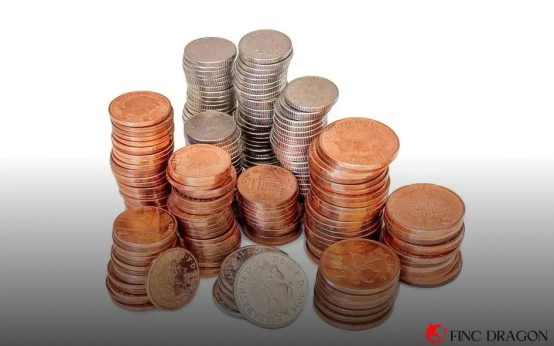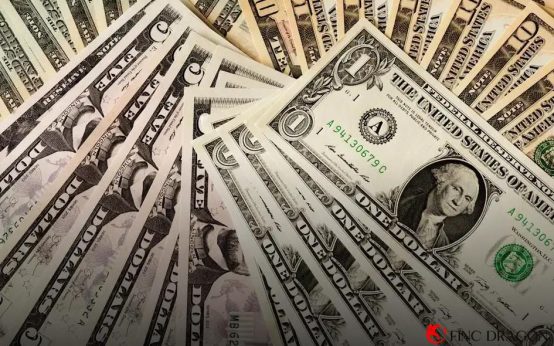Will the U.S. lose its credit rating again? This question looms large over the economy, causing concern among investors and policymakers. Understanding the factors that could lead to a credit rating downgrade is crucial. In this article, we’ll explore the history of U.S. credit ratings, the impacts of a downgrade, and the potential economic consequences. Stay informed to grasp the potential future of the U.S. economy.
The History of U.S. Credit Rating Changes
The evolution of credit ratings in the United States reflects the nation’s economic transformations and fiscal policies over the years. The focus often lies on the primary credit rating agencies – Standard & Poor’s (S&P), Moody’s, and Fitch Ratings, which assess the creditworthiness of the U.S. government.
Early Developments in U.S. credit rating history can be traced back to the 20th century, where sovereign ratings became a tool for investors to gauge the risk of sovereign debt. Initially, the U.S. enjoyed a stable AAA rating, reflecting its strong economic standing.
However, significant changes began in the 2000s when the financial landscape altered remarkably. The economic boom at the start of the century concealed underlying financial vulnerabilities which became apparent during times of economic downturn.
The pivotal year 2011 marked the first ever downgrade of U.S. credit rating by S&P, moving from AAA to AA+. This was a result of intensifying political turmoil over the debt ceiling and the inability to reach a consensus on fiscal policy. This marked a historical moment, signifying a shift in global perception of U.S. credit reliability.
Since then, there have been continual assessments and reviews of the U.S. credit rating. Each review hinges on various factors including political stability, economic performance, and fiscal policy decisions. It is crucial to comprehend that these ratings not only affect governmental borrowing costs but also influence global financial markets.
Impacts of Credit Rating Downgrade

A credit rating downgrade can have several substantial impacts on a country’s economy. One of the most immediate consequences is an increase in borrowing costs. When the credit rating of a country is lowered, it signifies higher risk, which results in investors demanding higher interest rates on government bonds to compensate for this risk. This, in turn, increases the cost of domestic borrowing.
The downgrade may also lead to a loss of investor confidence. Investors and financial markets see a downgrade as a red flag, suggesting potential economic instability or fiscal irresponsibility. This perception can cause foreign and domestic investments to decline, affecting various sectors that rely heavily on these funds.
Beyond that, a credit rating downgrade can have social implications. The government’s higher borrowing costs often lead to reduced public spending. This means less spending on critical sectors such as healthcare, education, and infrastructure, which directly impacts the populace.
Moreover, the downgrade can lead to currency depreciation. A weaker credit rating may lead to reduced demand for the country’s currency, as foreign investors may seek more stable alternatives. Currency depreciation can increase the cost of imports, contributing to higher inflation rates.
Market volatility is another impact that usually follows a downgrade. As the news spreads, financial markets may react unpredictably, with stock prices fluctuating due to the uncertainty and negative sentiments surrounding the downgrade.
Finally, the downgrade can strain international relations. A lower credit rating might influence a country’s standing in international negotiations and trade agreements, as other nations may view it as less reliable.
Factors Influencing U.S. Credit Rating
The credit rating of the U.S. is shaped by various critical components that must be understood to grasp the financial implications fully. Economic Stability plays a significant role, where consistent growth and low unemployment rates contribute positively. Conversely, economic downturns or unexpected recessions can trigger a reevaluation of the rating.
Government Debt Levels are another pivotal element. When national debt rises without a corresponding increase in economic output, it may prompt concerns over the ability to meet these obligations. Analysts closely monitor the debt-to-GDP ratio for signs of fiscal health or distress.
Political Climate also substantially influences the credit rating. Political stability and clear economic policies help maintain investor confidence. However, legislative gridlocks or drastic policy shifts, especially regarding budget management, can lead to uncertainty and potential downgrades.
Monetary Policy
Another crucial factor is the effectiveness of the Federal Reserve’s monetary policy. Interest rate decisions and efforts to manage inflation can either bolster or weaken the confidence of international investors.
Finally, External Factors such as global economic conditions and geopolitical risks can affect the U.S. credit rating. A strong international partnership can provide a safety net; however, global tensions and trade disputes might have adverse effects.
Potential Economic Consequences

The possible loss of the U.S. credit rating could trigger significant shifts in the global economy. One immediate effect might be increased borrowing costs for the U.S. government. By paying higher interest on its debt, the government could face budgetary constraints, impacting public spending and investments. This scenario might lead to a reduction in public services which could affect social programs.
Moreover, a change in the credit rating could affect the value of the U.S. dollar. A weakened rating might prompt investors to reconsider their portfolios, potentially causing fluctuations in currency markets. Such economic uncertainty could influence inflation rates, making goods more expensive for consumers.
There is also a risk that global investors might seek alternative safe havens. Diversification away from U.S. Treasury securities could result in diminished investor confidence in U.S. markets. This shift in trust may lead to decreased foreign investments, slowing economic growth.
The overall economic impact would likely ripple through various sectors. Companies might encounter difficulties in securing capital, as lending conditions tighten. This could lead to reduced business expansions and possibly higher unemployment rates if businesses are unable to sustain their workforce.
Future Predictions for U.S. Credit Rating
The future of the U.S. credit rating is a subject of intense debate among economists and analysts. Predicting the trajectory of credit ratings involves analyzing several complex factors. The current fiscal policies, economic growth projections, and political stability all play crucial roles in forecasting future ratings.
An important aspect to consider is the country’s debt trajectory. With the national debt reaching unprecedented levels, there is a growing concern about the sustainability of current fiscal policies. Will lawmakers adopt measures to curb the deficit, or will political gridlock hinder progress?
A significant factor is economic growth. If the U.S. economy grows at a robust pace, it could reassure rating agencies and mitigate concerns about the debt burden. On the other hand, sluggish growth or recession risks might exacerbate worries, leading to potential downgrades.
Political factors also cannot be ignored. Political stability and effective governance are crucial for maintaining investor confidence. Frequent changes in policy directions and political instability can undermine confidence, potentially affecting the credit rating outlook.
Global economic conditions are another variable in these predictions. A downturn in global markets or trade conflicts could impact the U.S. economy and, by extension, its credit rating. Additionally, how the country addresses international relationships and trade agreements could influence its financial standing.
Overall, determining the future of the U.S. credit rating requires a careful balancing act of economic, fiscal, and political strategies. Benchmarking with other economies, understanding internal dynamics, and reacting proactively to global shifts will be key in shaping the credit rating landscape for the United States.





